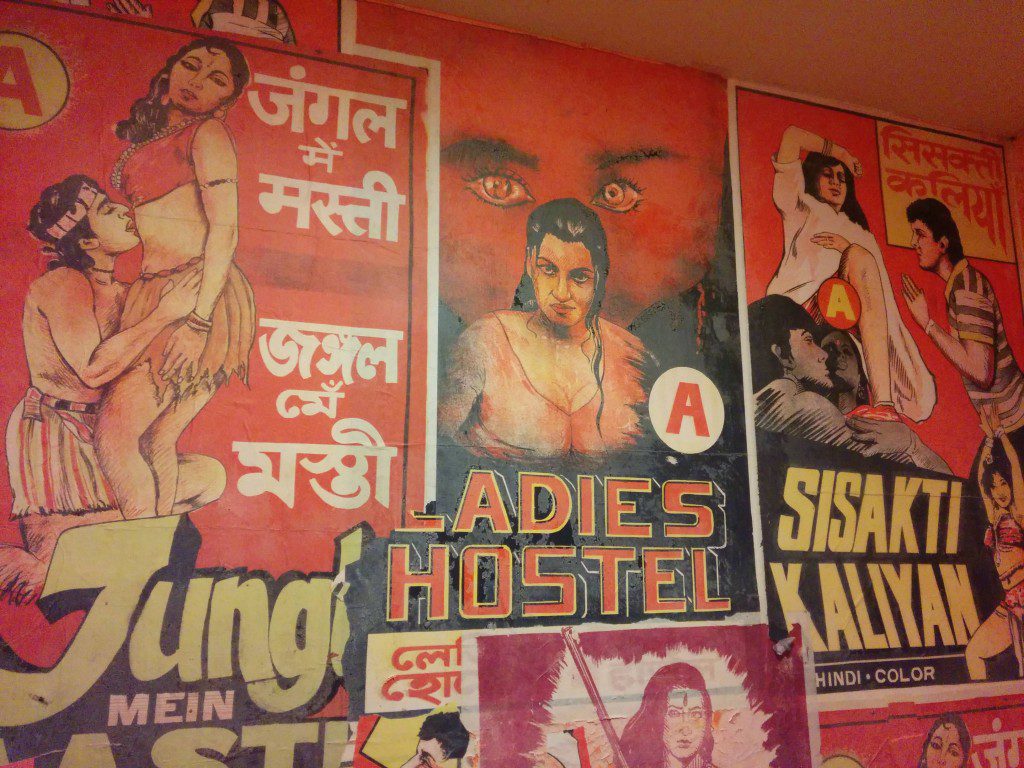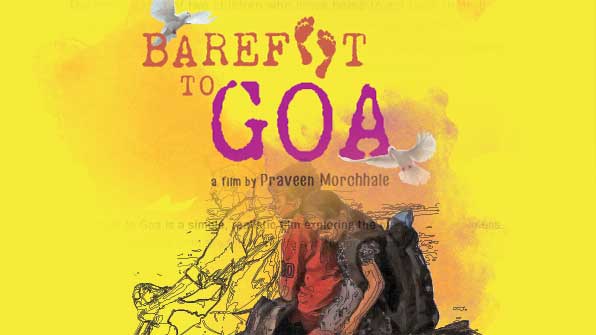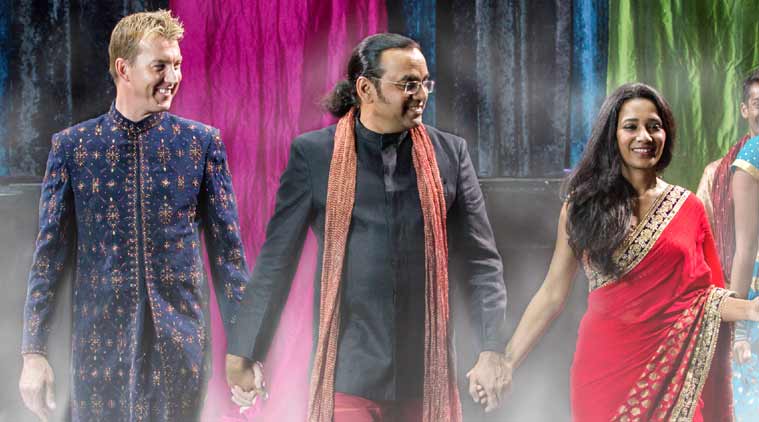French filmmaker Leos Carax’s 2012 movie, Holy Motors, opens up with a man, Carax himself, waking up and searching for a keyhole in a wall that resembles a forest. Once located the right place, he drills a hole with his index finger, opens a door and steps in. In the next shot, he stumbles upon a fully packed cinema, with the faces of the spectators are immersed in the inevitable darkness. The sequence had many interpretations of the critics, and the important one among them was concerned about the “gazes” in cinema.
There are a number of gazes possible in cinema, irrespective of its genre or nationality. While watching a movie, the spectators can watch the characters, the characters can watch each other or the spectators and last but not the least, the filmmaker can watch either the spectators or the characters. These multiple possibilities of gazes in cinema make it a complex system of psychological warfare, which depends on which side the perception falls into. The origin, propagation, and consumption of the B and C grade movies are rooted in this fathom level of seeing and are guided by the influential and decisive forces of capital.
The evolution of C grade movies is diverse and complex, according to the cultural background and visual history of a particular movie industry. But, the scholars often attribute certain genre specifications to them like low budget, poor publicity, lecherous, dark, and cheap entertainment. Even though boxing movies into genres is an inevitable part of cinema history, the very act allows certain movies and personalities escape or lost through the cracks. A complex system of C grade movies is all the more vulnerable to such a mishap because of its numerous, and often overlapping, subgenres. Moreover, every industry enjoys its own history and characteristic genre features for B and C grade movies, which are shaped according to the moral, cultural, political, and social variants of the society in which the industry functions.
The history of B and C grade movies can be traced back to the late 20s, the end of the silent era in Hollywood. The Hollywood was undergoing a turbulent transformation and everyone was on their edges to survive in the highly volatile scenario. A scheme of events evolved and the minor players of Hollywood studios started focusing on quickly made, “cheap” movies to be shown at theaters running with tight austerity measures to save their necks in the battle. A new term, “double feature” came into prominence as the theaters started to offer two movies at the price of one, the second one being a low budget, B or C grade movie.
This system attracted more customers into the cinemas in small town and suburban theaters as small Hollywood studios, which identified the money making the potential of these movies, started pumping money into the production of such movies and marketed them as double features. The visible compartmentalization of B or C movies took a time to evolve and even today, these sections are largely overlapped with each other.
Even though there are some common factors that gave rise to a low-grade movie industry in Hollywood and India, the evolution and pattern were extremely different. While in Hollywood, low budget movies encompass a vast genre by breaking the rules of Hollywood narrative, and In India, B and C movies found ground in their unique way. Many researchers consider the 1987 movie Raat Ke Andhere Mein, directed by Vinod Talwar is India’s first perfect B-grade movie. Indian B movies were often identified with explicit sexual content, gory, horror, and violence, which are either invisible or used in a restricted manner in the mainstream movies, in tunes with our post-independence cultural parameters. B and C movie directors targeted those viewers who are not satisfied with the taboos and moral codes followed by Bollywood and other regional film industries. The viewers demanded more than what the mainstream can offer regarding sex, violence, and horror, and the B and C grade movies relied on this gap between demand and supply of desires and fantasies.
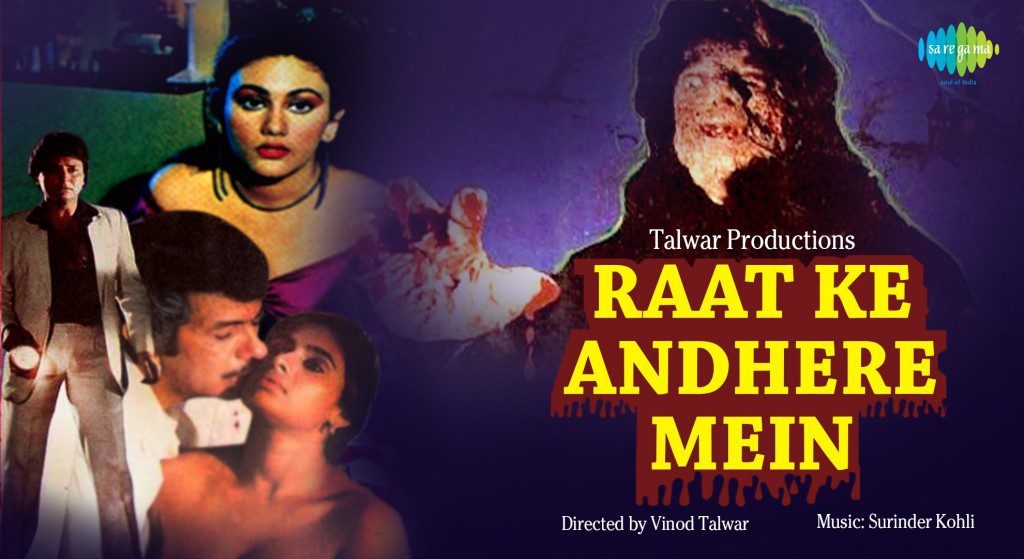
The “other” grade movies showed exponential growth in the 80s, acquired genre specifics and grouped under a wider term, C grade. They established a parallel cult following in the following years and the regional film industries followed Bollywood’s path with their own cults and stars. As the industry grew in its dimensions, there were even variants like B, C, D, and E, according to qualities of production and acting. Some of the prominent names in the C grade Bollywood were Vinod Talwar, Mohan Bakri, Raj Kumar Kohli, Joginder, Harinam Singh, Gyanedra Choudhari, SR Pratap, and K Apaiya. The most celebrated director of C grade, Kanti Shah started making movies in the early 90s and made many cult hits during his long career. Gradually, like in Hollywood, Bollywood established desi genre in C grade movies such as horror, daku, jungle, Tarzan, erotica, naag, and action. The seven brothers of Ramsays paved the foundation of the horror genre in India with their pioneering movies in the 70s and 80s.
In India, where the predominant film industry runs mostly on clichés, success formulas, and stardom, C grade movies offer an
escapade from boredom to the moviegoers who dare to taste the unknown. C grade movies welcome them with an undogmatic

and genuine portrayal of the human world with all its flaws and blemishes. Even though the execution, plot, technics, and acting are poor, according to the mainstream standards, most people feel these movies as funny and genuine. They tax on man’s deepest fears, perverse fantasies, erotica, and inhibitions, which are buried under by the mandates of civilization and society. By addressing these intimidating and embarrassing features without any moral pretensions, C grade movies gather a cult following, not only in Bollywood but in the regional industries also. Viewers take its raw craftsmanship, poor acting, and flawed production values as a genre specific phenomenon rather than failures.
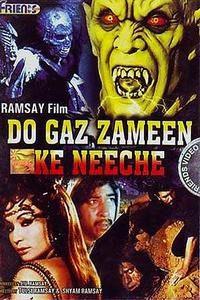 Unlike Hollywood, Indian C movies don’t get tempted by the cheesy sci-fi thrillers, as the Indian viewers are biased more towards ghosts, demons, erotica, and gory. In order keep a check on diminutive budgets compared the mainstream; the filmmakers often hire inept writers, non-actors, clumsy technicians, and use a lot of stock situations. This odd combination of flaws constitutes the unique selling proposition of C movies, imperfection. Even the titles like Do Gaz zamen Ke Neeche, Insaan Bana Shaitan, Pyaasi Bhootni, and Galiyon ka Badshah, utilize this as a tickle. C movies often gimmick or ridicule the mainstream movie templates with baffling dialogues and situations. With their absurd plot, odd locations and weird dialogues, these movies gather more and more cult following, including people from all strata of society and professions.
Unlike Hollywood, Indian C movies don’t get tempted by the cheesy sci-fi thrillers, as the Indian viewers are biased more towards ghosts, demons, erotica, and gory. In order keep a check on diminutive budgets compared the mainstream; the filmmakers often hire inept writers, non-actors, clumsy technicians, and use a lot of stock situations. This odd combination of flaws constitutes the unique selling proposition of C movies, imperfection. Even the titles like Do Gaz zamen Ke Neeche, Insaan Bana Shaitan, Pyaasi Bhootni, and Galiyon ka Badshah, utilize this as a tickle. C movies often gimmick or ridicule the mainstream movie templates with baffling dialogues and situations. With their absurd plot, odd locations and weird dialogues, these movies gather more and more cult following, including people from all strata of society and professions.
Even though, the low grade movies enjoy a vast, invisible, but loyal following in the country, they are yet to find their place in the academia. In Hollywood, the low grade movie industry found its identity with the help of critics, mainstream film theorists, and popular directors who took special interest and inspiration. Ace filmmaker Quentin Tarantino often reveals his affinity with the B movies, thanks to his short stint as an office assistant in a video archive in the late 80s.
How To Transform Your Vision Into A Great Movie, Explains Quentin Tarantino
Others like Martin Scorsese and Robert Rodriguez has also paid homage to the influences of B movies in their conversations. The exclusive movie world had even opened up its doors to iconic B grade filmmakers like Ed Wood and Roger Corman, and considered them as significant figures in the history of cinema for their distinctive style of filmmaking, however poor they were according to the Hollywood standards. Hollywood stars like Humphrey Bogart, Jack Nicholson and John Wayne found their footing in Hollywood through the B movies.
When Martin Scorcese Goes Candid About The Kubrick Charm
The Indian C grade movie industry is still facing apartheid from the media, mainstream and the viewers. While the media treat it as a vicious underworld taxing in on the man’s darkest desires, mainstream pundits look down upon it for the poor technical, production and acting parameters. Ironically, the viewer’s deal with them as a clandestine partner in their guilty pleasures, and those who follow them with a cult mindset never prefer to talk about them publicly. This pattern has close links with the ways in which Indians define discourses like sex, erotica, taboos, embarrassment, beauty, and ugliness. Moreover, the prominent C grade filmmakers are yet to turn up with the hidden jewels like in the West, in order to be discovered by scholars for their sophisticated sensibility and aesthetic.
A closer look at the C grade system reveals a complex, symbiotic pattern constituted of filmmakers, who are either churned up by the hostile mainstream, or those who want to learn every nook and corner of the filmmaking process at a lower cost and, producers who want to capitalize the talent and workforce at the lowest rates available, compared to the massive and often stipulate remunerations and other expenses in the mainstream. The third, and the most vulnerable sect in the system is the actors who take up the job for survival, after lured, seduced and ignored by the dream machine, Bollywood. While sheer passion and struggle rule the filmmakers and actors, the producers aim for quick returns of their money at the cost of cheap thrills, perverse motifs, dark fantasies, horror, and gory.

And, the fourth and most important pillar of the C grade industry, the invisible multitude of viewers, who appear from metros, suburbs, small towns, and villages, as if from nowhere, assemble like a congregational gathering in the dark seclusion of cinema halls and engage in the experience with a ritualistic zeal. They are lured by the stark imperfection of C grade movies, which they have been missing in the mainstream blockbuster. The C grade movies assure them of the vulnerability of human nature and satisfy their quench for identification with the dark desires, fantasies, perverse dreams, and inherent violence.
Cinema can’t mask its voyeuristic attributes with the entertainment or aesthetic credentials. While the mainstream movies restrict and polish those voyeuristic possibilities, C grade movies unleash the viewer gazes into the wild. It’s a peeping gaze fixed into another person’s secret and reveals the terrible thoughts, which are suppressed because they are too embarrassing to express. Apart from the cheap thrills, baffling scenes, erotica, and animated acting, the genuity in portraying complex humanness without embarrassment, and the emotional assurance it provides to the viewers, make C grade movies necessarily a cult.
Written By: Ragesh Dipu


